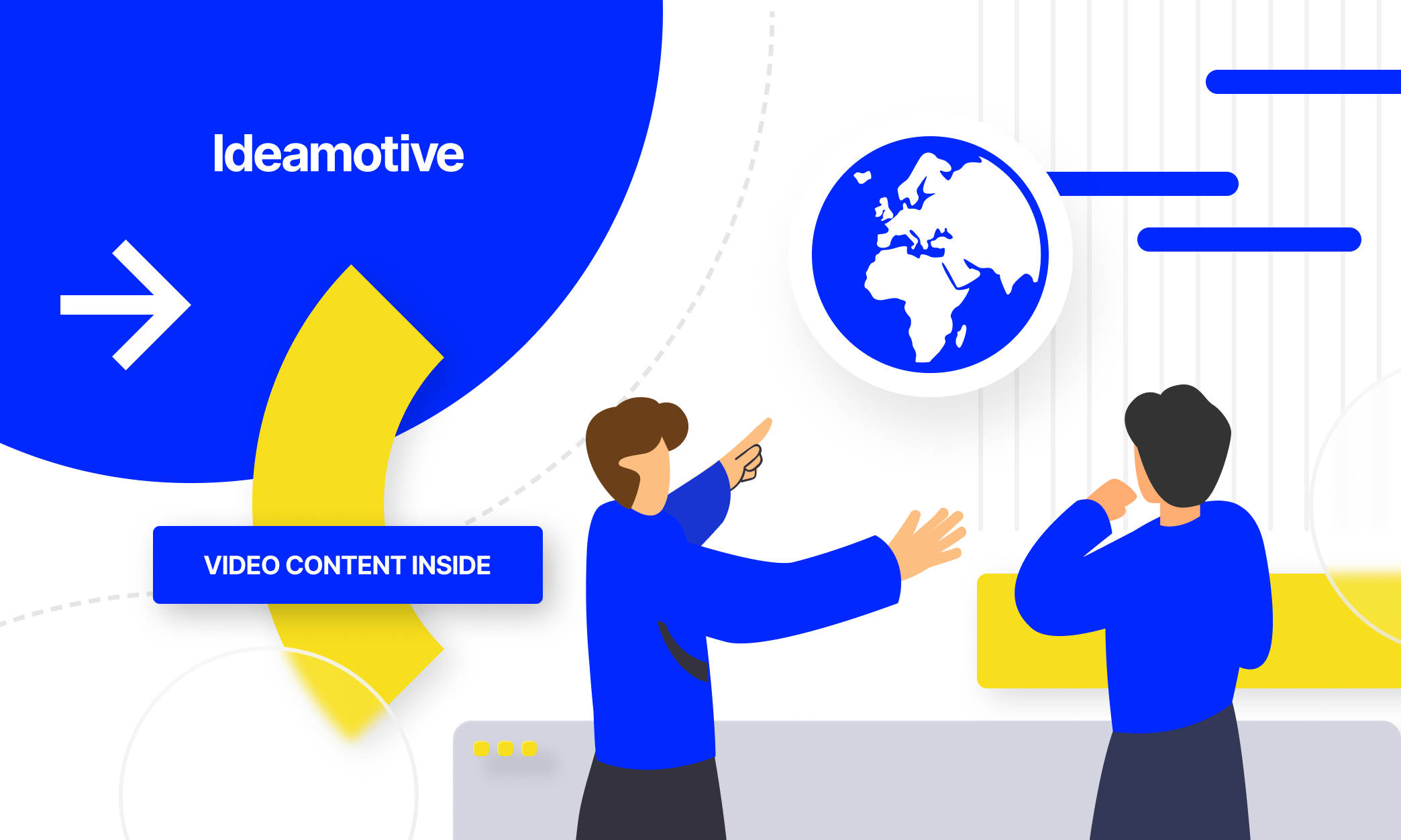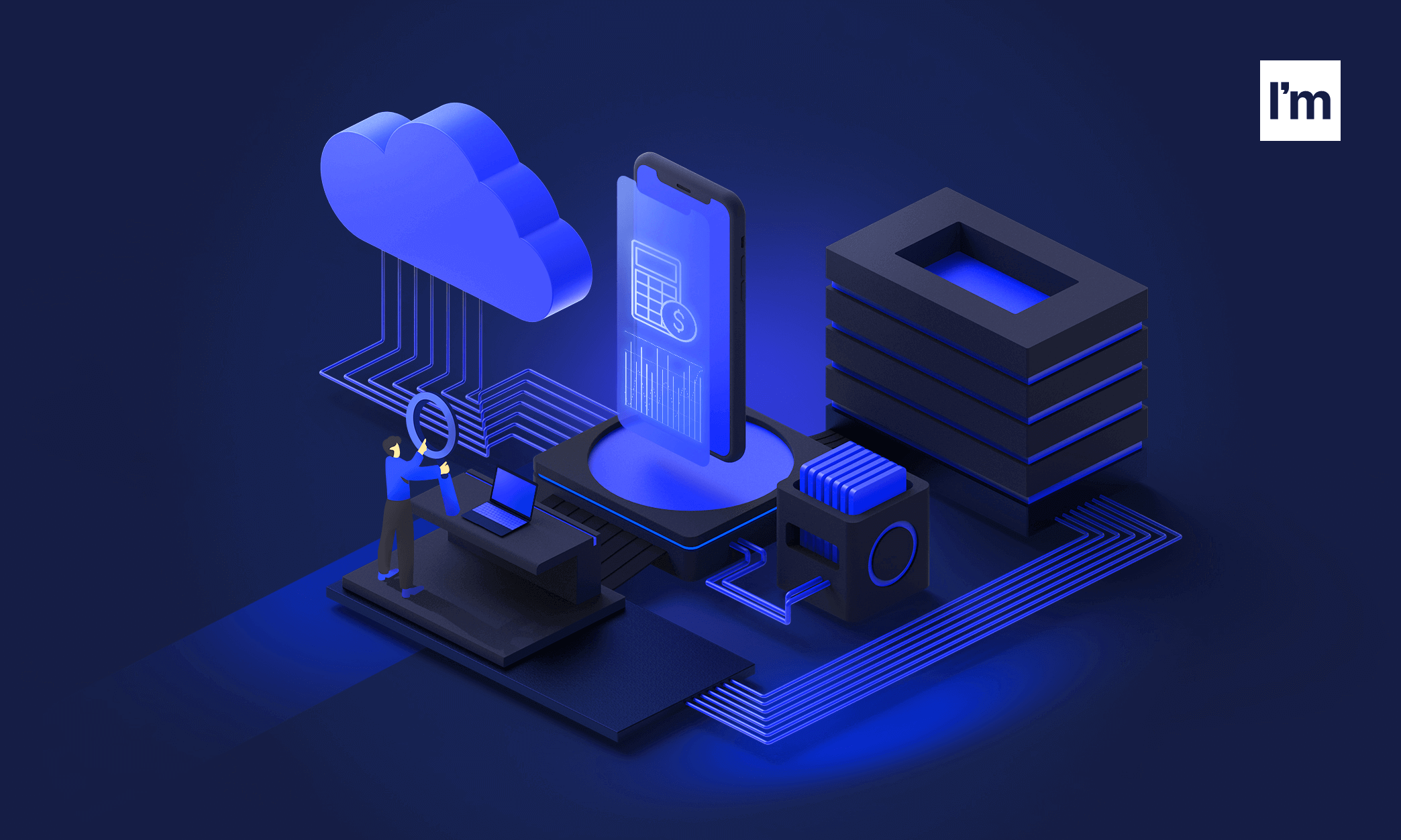In the rapidly evolving landscape of IT scale-ups, customer experience (CX) has emerged as the cornerstone of sustained business growth. As products increasingly become commoditized, the distinctiveness of a brand is now significantly influenced by the quality of customer interactions and experiences. This article delves into the pivotal role of exceptional customer experiences in propelling IT scale-ups to new heights.
The Shift to Customer Experience
The transition from a product-focused to a customer-experience-centric approach marks a significant strategic realignment for businesses. This shift recognizes the growing importance of CX as a critical differentiator in a competitive market. In an era where customer expectations are constantly evolving, delivering stellar experiences is not just an operational choice but a strategic imperative.
The Game-Changer for IT Scale-Ups
For IT scale-ups, excelling in customer experience offers a pathway to not just survive but thrive. These companies stand at a critical juncture where their ability to scale and grow hinges on their capacity to build and maintain strong customer relationships. As we explore this landscape, we draw on recent insights and trends shaping the world of customer experience.
Embracing the Customer-Centric Approach
Customer-centricity involves more than just fine-tuning customer service; it requires a holistic strategy encompassing every aspect of a business's operations. CEOs and leaders must view customer experience as a strategic differentiator, fundamental to the way they run their businesses. This approach transcends traditional marketing and sales, encompassing everything from product design to after-sales support.
Insights and Trends
Revenue Growth and Customer Experience: Companies focusing on CX witness significant revenue growth. Firms that prioritize customer experience enjoy a revenue increase of up to 80%, and those that are customer-centric report 60% higher profits compared to their peers.
Automation and AI in CX: The integration of technologies like Robotic Process Automation (RPA) and Artificial Intelligence (AI) in customer service operations significantly enhances efficiency and customer satisfaction. These technological advancements not only streamline operations but also provide personalized experiences that resonate with customers.
The Rise of Omnichannel Services: In today’s interconnected world, offering a seamless omnichannel experience is crucial. Customers expect a consistent and integrated service across various channels, be it social media, mobile apps, or in-store interactions.
Social Media as a Key Player: Social media continues to be an integral part of the customer experience, with a significant impact on brand perception and loyalty.
The Metaverse and Future Experiences: Emerging platforms like the metaverse are opening new avenues for immersive customer experiences. Brands are increasingly leveraging these platforms to create memorable and engaging interactions.
Self-Service and Customer Autonomy: Customers increasingly prefer self-service options, reflecting a desire for autonomy and convenience in their interactions with brands.
Employee Engagement in CX: The link between employee satisfaction and customer experience is becoming more evident. Engaged and equipped employees are key to delivering superior customer experiences.
The Rise of Customer Experience (CX) in Business Strategy
The evolution of customer experience (CX) from a peripheral element to a central strategy in business, particularly in the IT sector, marks a fundamental shift in how companies approach growth and competition.
From Product-Centric to Customer-Centric
Historically, the focus of businesses, especially in the tech industry, was primarily product-driven. Innovations and technical advancements were the linchpins of business strategy. However, as market saturation increased and product differentiation became more challenging, the emphasis shifted towards customer experience. This transition acknowledges that long-term success hinges not only on what you sell but also on how you sell it and support it post-sale.
Customer Experience as a Competitive Differentiator
In the current market landscape, customer experience stands out as a crucial differentiator. A study by Zendesk reveals that 73% of customers consider CX as the primary factor in their purchasing decisions. Moreover, companies leading in CX outperform their peers, experiencing significant rewards in acquisition, loyalty, and cost efficiency.
The Emotional Connect and Brand Loyalty
The emotional connection customers feel with a brand is profoundly influenced by their experiences. Approximately 62% of customers feel an emotional connection to the brands they regularly interact with. This emotional bond is pivotal in building brand loyalty and advocacy, which are essential for long-term business sustainability.
CX in the Digital Age
The digital transformation has amplified the importance of CX. With the rise of social media and online platforms, customers have more forums to share their experiences, both positive and negative. Businesses recognize the value of social customer care, with 59% agreeing that it has increased in value for their organization.
CX as a Revenue Generator
Investing in CX is not just a cost of doing business; it is a revenue generator. Companies focusing on CX have seen an 80% increase in revenue. This trend is even more pronounced in IT scale-ups, where customer experience can be a significant lever for growth and market penetration.
Anatomy of a Great Customer Experience
Understanding the elements that constitute a great customer experience (CX) is crucial for businesses, especially in the IT sector, to design strategies that resonate with their customers and foster brand loyalty.
Defining Great Customer Experience
A great customer experience is multifaceted, encompassing every touchpoint a customer has with a brand. It's about understanding and meeting customer needs, providing value, and creating an emotional connection. Great CX is characterized by ease, convenience, personalization, and proactive engagement.
Key Elements of the Customer Journey
First Impressions: The initial interaction between a customer and a brand sets the tone for the entire relationship. This can be a visit to a website, a call to customer service, or the unboxing of a product. First impressions are crucial in establishing trust and interest.
Personalization: Personalized experiences make customers feel valued and understood. Tailoring services or communications to individual preferences and histories can significantly enhance satisfaction. A study by Deloitte found that 80% of customers are more likely to purchase from brands that offer personalized experiences.
Ease and Accessibility: A seamless, frictionless customer journey is essential. This includes easy navigation of websites, minimal waiting times, and accessible customer support. Ensuring that customers can quickly find what they need without unnecessary hurdles is key.
Consistent Omnichannel Experience: Customers interact with brands through multiple channels, and they expect consistency across all of them. This means that the experience on a mobile app should be as satisfying as on a website, a physical store, or a social media platform.
Proactive Support and Engagement: Anticipating customer needs and resolving issues before they become problems is a hallmark of great CX. Proactive support can include predictive assistance, personalized recommendations, or preemptive service alerts.
Feedback and Adaptation: Soliciting and acting on customer feedback is critical. It shows customers that their opinions are valued and helps businesses to continuously improve their offerings and experiences.
Empathy and Emotional Connection: Customers are more likely to stay loyal to a brand that demonstrates empathy and understands their needs and emotions. Emotional connections can be fostered through thoughtful interactions, understanding customer pain points, and providing compassionate support.
The Role of Technology in Enhancing CX
Advancements in technology, such as AI and machine learning, play a significant role in enhancing CX. They enable businesses to analyze customer data, predict behaviors, offer personalized recommendations, and automate routine tasks for efficiency. However, the human element remains irreplaceable, especially in complex or sensitive interactions.
The Impact of Customer Experience on Business Growth
The influence of customer experience (CX) on business growth is profound and multifaceted, especially in the IT sector. In this section, we explore how exceptional CX leads to increased brand loyalty, customer retention, and ultimately, drives business growth.
Enhanced Brand Loyalty and Customer Retention
Brand Loyalty: Stellar customer experiences directly contribute to brand loyalty. Customers who have positive experiences are more likely to remain loyal to the brand. A Microsoft report indicates that 95% of consumers cite customer service/experience as a deciding factor in brand loyalty.
Customer Retention: Retaining existing customers is more cost-effective than acquiring new ones. Positive CX leads to higher retention rates. It’s reported that businesses focusing on their customers are 60% more profitable than those that don’t.
Word-of-Mouth Marketing: Satisfied customers often become brand advocates. Deloitte reports that consumers typically tell nine people about a positive brand experience, as opposed to 16 people about a negative one. This word-of-mouth marketing is invaluable for organic growth.
Digital Ecosystem in Motorcycle Manufacturing: A motorcycle manufacturer created a digital ecosystem with user experience–driven offerings, making it easier for customers to learn about products, order items, and connect with others. This approach to CX contributed significantly to the brand’s growth.
Telecom Personalization: A telecom company reimagined its customer journey for the digital era, offering personalized recommendations and flexible plan adjustments via self-service apps. This shift towards customer-centricity resulted in increased customer satisfaction and retention.
The Role of Technology in CX and Business Growth
AI and Automation: Implementing AI and automation in customer service has shown demonstrable improvements in customer satisfaction and overall performance. 80% of executives reported improvements in customer satisfaction due to conversational AI.
Self-Service Options: Providing self-service options can improve customer satisfaction and reduce serving costs. 81% of consumers prefer more self-service options on their customer journeys, and quality CX can reduce serving costs by a third.
Measuring Success: Customer Satisfaction and Revenue Growth
Organizations that effectively measure and respond to customer satisfaction metrics are more likely to experience growth in revenue and profitability. Companies with a focus on CX have reported up to an 80% increase in revenue.
Building a Customer-Centric Culture
Developing a customer-centric culture is a strategic imperative for businesses aiming for long-term success. This section outlines the strategies to embed a customer-centric ethos in a company, emphasizing the role of employee training in delivering exceptional customer service.
Cultivating a Customer-Centric Mindset
Leadership Commitment: The journey towards customer centricity begins at the top. Leadership must not only endorse but also embody the customer-first approach in every decision and action.
Employee Empowerment: Empowering employees to make customer-centric decisions is crucial. This means providing them with the authority, tools, and resources to address customer needs effectively.
Alignment of Values and Goals: The company's values and goals should be aligned with customer-centric principles. This alignment should be evident in the company's mission statement, objectives, and key performance indicators.
Fostering a Collaborative Environment: Encouraging collaboration across departments ensures that every aspect of the customer experience is cohesive and consistent.
Role of Employee Training in Customer Service
Comprehensive Training Programs: Regular and comprehensive training programs help employees understand the importance of CX and equip them with the skills to deliver it.
Soft Skills Development: Training in soft skills, such as communication, empathy, and problem-solving, is as important as technical knowledge in delivering quality customer service.
Feedback and Continuous Learning: Establishing a culture of feedback and continuous learning helps employees stay aligned with evolving customer expectations.
Recognizing and Rewarding Customer-Centric Behavior: Recognition and rewards for customer-centric behavior reinforce the importance of CX and motivate employees to excel in their roles.
Investing in Customer Experience
Investing in customer experience (CX) is critical for businesses to differentiate themselves in a crowded market. This section explores the importance of such investments and reviews tools and technologies that enhance CX.
Importance of CX Investment
Competitive Advantage: In an environment where products are often similar, CX becomes a key differentiator. Investing in CX can elevate a brand above its competitors.
Increased Customer Lifetime Value: A superior CX can increase the lifetime value of customers, as they are more likely to return and recommend the brand to others.
Reduced Customer Churn: Effective CX investments can significantly reduce customer churn rates, as satisfied customers are less likely to switch to competitors.
Tools and Technologies Enhancing CX
Customer Relationship Management (CRM) Systems: CRMs help in managing customer interactions and data throughout the customer lifecycle, enhancing customer service, and fostering relationships.
AI and Chatbots: AI-driven technologies, including chatbots, can provide instant, 24/7 customer support, improving response times and resolution rates.
Data Analytics Tools: These tools enable businesses to analyze customer data to gain insights into preferences and behaviors, allowing for more personalized experiences.
Omnichannel Platforms: Implementing omnichannel platforms ensures a seamless customer experience across various touchpoints, including social media, websites, and in-store interactions.
Feedback Management Systems: These systems help in collecting and analyzing customer feedback, which is essential for continual improvement of CX.
Leveraging Customer Feedback for Growth
Utilizing customer feedback is a vital strategy for businesses to refine their products or services and enhance the overall customer experience (CX). This section delves into the techniques for effectively gathering and analyzing customer feedback.
Importance of Customer Feedback
Continuous Improvement: Feedback provides direct insights into customer needs and expectations, enabling businesses to make informed improvements.
Building Trust and Loyalty: Responding to customer feedback shows customers that their opinions are valued, fostering trust and loyalty.
Identifying Trends and Opportunities: Analyzing feedback can reveal emerging trends and potential areas for innovation or improvement.
Techniques for Gathering Customer Feedback
Surveys and Questionnaires: Regularly conducting surveys or questionnaires is a straightforward method to collect feedback. Tools like SurveyMonkey or Google Forms can facilitate this process.
Social Media Monitoring: Social media platforms are rich sources of unsolicited customer feedback. Tools like Hootsuite or Sprout Social can help monitor mentions and sentiments about the brand.
Customer Interviews and Focus Groups: Direct conversations with customers through interviews or focus groups can provide deeper insights.
Feedback Boxes on Websites: Implementing feedback forms or boxes on a company's website allows customers to easily share their thoughts and experiences.
Net Promoter Score (NPS) Tracking: NPS is a popular metric used to gauge customer loyalty and satisfaction. It involves asking customers how likely they are to recommend the business to others.
Analyzing and Acting on Feedback
Data Analysis Tools: Using data analysis tools to interpret large volumes of feedback can help identify common themes and areas for improvement.
Closing the Feedback Loop: Once feedback is collected and analyzed, it's crucial to close the loop by communicating back to customers what changes or improvements have been made as a result.
Integrating Feedback into Business Strategy: Feedback should be a key component in shaping business strategy, product development, and CX enhancements.
Net Promoter Score (NPS): NPS assesses customer loyalty and likelihood of recommending the brand to others. It categorizes customers into detractors, passives, and promoters based on their likelihood to recommend.
Customer Satisfaction Score (CSAT): CSAT measures customer satisfaction with a product, service, or experience, often through surveys after specific interactions.
Conversion Rate: This metric assesses how effectively marketing and presentation efforts lead to conversions, such as purchasing a product or signing up for an offer.
Employee Satisfaction: Measuring the satisfaction of customer-facing employees is vital as happier employees are more likely to provide satisfactory experiences.
Conclusion
In conclusion, the significance of customer experience in driving business growth, particularly in the IT sector, cannot be overstated. The metrics discussed offer a comprehensive view of how well a company is performing in terms of customer-centricity. By continuously monitoring and improving these key areas, businesses can enhance customer satisfaction, loyalty, and ultimately, their bottom line.
Embracing a customer-centric approach requires commitment and a strategic shift in thinking. By prioritizing customer experience, IT scale-ups and other businesses can foster sustainable success in a competitive marketplace, ensuring they not only meet but exceed customer expectations.









